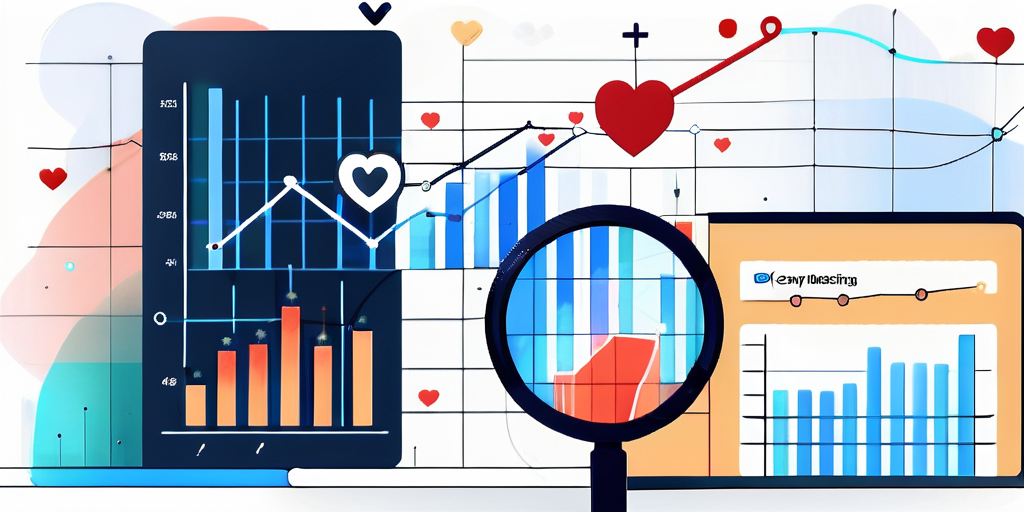The Power of Analytics and Reporting in Nonprofit Marketing

Nonprofit organizations play a vital role in society by addressing critical issues and creating positive change. In order to effectively carry out their missions, nonprofits must engage in strategic marketing efforts. A key aspect of successful nonprofit marketing is the use of analytics and reporting to gain insights and make data-driven decisions. By harnessing the power of analytics, nonprofits can maximize their impact and drive greater results.
Understanding the Role of Analytics in Nonprofit Marketing
In today’s digital age, data is abundant. Nonprofits have the opportunity to utilize analytics to extract valuable information from the vast sea of data available. Analytics in the nonprofit sector involves the process of collecting, analyzing, and interpreting data to gain insights into their target audience, campaign performance, and overall marketing effectiveness.
Defining Analytics in the Nonprofit Sector
Analytics in the context of nonprofit marketing refers to the systematic measurement, analysis, and reporting of data to understand how marketing efforts are influencing the organization’s goals. It involves using various tools and techniques to track and measure key performance indicators (KPIs) and develop actionable insights for optimization.
The Importance of Data-Driven Decision Making
Data-driven decision making is crucial for nonprofit organizations to navigate the complexities of the modern marketing landscape. By basing decisions on factual insights rather than gut feelings, nonprofits can allocate their limited resources more effectively and make informed choices that drive maximum impact. Data-driven decision making allows nonprofits to prioritize their marketing efforts, optimize strategies, and adapt quickly to changing trends and audience preferences.
One of the key benefits of data-driven decision making is the ability to measure the success of marketing campaigns. By analyzing data, nonprofits can determine which campaigns are resonating with their target audience and which ones are falling flat. This information allows them to make adjustments and refine their strategies to ensure they are reaching the right people with the right message.
Furthermore, analytics can provide nonprofits with valuable insights into their target audience. By analyzing demographic data, online behavior, and engagement metrics, nonprofits can better understand who their audience is and what motivates them. This knowledge can then be used to tailor marketing messages and campaigns to effectively engage and inspire their target audience.
Another aspect of data-driven decision making is the ability to identify trends and patterns. By analyzing data over time, nonprofits can spot emerging trends in their target audience’s behavior and preferences. This information can be used to anticipate future needs and develop proactive marketing strategies that stay ahead of the curve.
In conclusion, analytics plays a vital role in nonprofit marketing by providing valuable insights, measuring campaign success, understanding target audiences, and identifying trends. By harnessing the power of data, nonprofits can make informed decisions that drive maximum impact and help them achieve their goals in an ever-evolving digital landscape.
Key Metrics to Track in Nonprofit Marketing
Every nonprofit campaign and marketing initiative is unique. However, there are several key metrics that nonprofits should consider tracking to gauge their marketing success and measure the impact of their efforts.
One important metric to track is website traffic. By monitoring the number of visitors to their website, nonprofits can assess the effectiveness of their online presence and identify areas for improvement. Additionally, tracking conversion rates is crucial. This metric measures the percentage of website visitors who take a desired action, such as making a donation or signing up for a newsletter. By analyzing conversion rates, nonprofits can determine the effectiveness of their call-to-action strategies and make necessary adjustments.
Identifying Relevant Metrics
Nonprofits need to identify the metrics that align with their specific goals and objectives. These may include metrics such as social media engagement, email open and click-through rates, volunteer sign-ups, and donation amounts. Social media engagement metrics, such as likes, comments, and shares, can provide valuable insights into the reach and impact of a nonprofit’s social media campaigns. Email open and click-through rates, on the other hand, can help nonprofits evaluate the effectiveness of their email marketing efforts and tailor their content to better engage their audience.
Furthermore, tracking volunteer sign-ups and donation amounts can give nonprofits a clear picture of their supporters’ level of engagement and commitment. These metrics can help nonprofits identify trends and patterns in donor behavior, allowing them to develop targeted fundraising strategies and nurture long-term relationships with their supporters.
Interpreting Marketing Metrics for Nonprofits
Once nonprofits have collected data and metrics, the next step is to interpret and analyze it effectively. It is essential to understand the story behind the numbers and identify trends, patterns, and correlations that can inform marketing strategies. Data visualization tools can help nonprofits present their data in a more accessible and meaningful way, facilitating easier interpretation and decision making.
For example, nonprofits can use charts and graphs to visually represent their website traffic over time, making it easier to spot any significant increases or decreases. By analyzing these trends, nonprofits can identify the factors that contribute to their website’s success and replicate them in future marketing initiatives. Similarly, data visualization can help nonprofits identify correlations between social media engagement and donation amounts, allowing them to tailor their social media content to maximize fundraising efforts.
In conclusion, tracking and interpreting key metrics is essential for nonprofits to measure the effectiveness of their marketing efforts. By understanding the story behind the numbers and using data visualization tools, nonprofits can make informed decisions and optimize their marketing strategies to achieve their goals and make a greater impact in their communities.
The Impact of Reporting on Nonprofit Success
Reporting plays a significant role in the success of nonprofit organizations. Effective reporting enhances transparency, fosters donor trust, and enables nonprofits to demonstrate the impact of their work. Regular reporting is a powerful tool that can influence both donor engagement and overall nonprofit success.
The Connection Between Reporting and Transparency
Transparency is crucial in the nonprofit sector. By providing transparent reporting, nonprofits can earn the trust of their donors, stakeholders, and the wider community. Transparent reporting enables nonprofits to showcase the outcomes and impacts of their programs, instilling confidence in the effectiveness and efficiency of their work.
For example, when a nonprofit organization shares detailed financial reports, it allows donors to see exactly how their contributions are being utilized. This level of transparency builds credibility and reassures donors that their funds are being put to good use. Moreover, by providing comprehensive program reports, nonprofits can highlight the specific activities and initiatives they have undertaken to achieve their mission. This transparency not only demonstrates accountability but also encourages donors to continue supporting the organization’s cause.
How Regular Reporting Influences Donor Engagement
Regular reporting also plays a vital role in donor engagement. Donors want to know how their contributions are making a difference. By regularly reporting on the progress and impact of their programs, nonprofits can keep donors informed and engaged. This communication helps foster a sense of partnership and encourages continued support and involvement.
When nonprofits provide consistent updates on their projects, donors feel more connected to the organization’s mission. They can see the tangible results of their contributions, which strengthens their belief in the nonprofit’s ability to create positive change. Additionally, regular reporting allows nonprofits to share stories of the individuals or communities they have helped, creating a personal connection between donors and the impact of their support.
Furthermore, regular reporting provides an opportunity for nonprofits to express gratitude towards their donors. By acknowledging the contributions and highlighting the difference they have made, nonprofits can make donors feel valued and appreciated. This recognition not only strengthens the bond between the organization and its supporters but also encourages continued generosity.
Implementing Analytics and Reporting in Your Nonprofit
Implementing analytics and reporting in a nonprofit organization requires careful planning and consideration of the tools and resources available. It is essential to choose the right tools for data analysis and reporting, as well as to train the team on how to collect, interpret, and leverage data effectively.
Choosing the Right Tools for Analytics and Reporting
There are numerous analytics and reporting tools available to nonprofits. It is important to assess the specific needs and goals of the organization and select tools that align with those objectives. Whether it’s web analytics platforms, customer relationship management (CRM) systems, or data visualization tools, nonprofits should invest in tools that provide actionable insights and streamline reporting processes.
Training Your Team on Data Analysis and Reporting
Implementing analytics and reporting requires not only the right tools but also skilled individuals who can effectively analyze and interpret the data. Nonprofits should invest in training their team members on data analysis techniques, understanding metrics, and using reporting tools. This empowers the team to make well-informed decisions and extract valuable insights for more impactful marketing efforts.
Overcoming Challenges in Nonprofit Analytics and Reporting
While analytics and reporting offer immense opportunities for nonprofits, there are challenges to overcome. Managing and collecting data, ensuring data accuracy, and keeping up with technological advancements are just a few of the hurdles organizations may face.
Addressing Common Obstacles in Data Collection
Data collection can be complex, particularly for nonprofits working with limited resources. It is important to design data collection processes that are efficient and align with the organization’s goals. Nonprofits should explore various data collection methods and utilize automation whenever possible to streamline the process and reduce the risk of human error.
Strategies for Effective Data Management and Reporting
Effective data management and reporting require the establishment of clear data governance policies and practices. Nonprofits should develop standardized procedures for data collection, storage, and analysis. Additionally, regular data audits and quality checks can ensure the accuracy and reliability of the data used for reporting.
The Power of Analytics and Reporting in Nonprofit Marketing
In conclusion, analytics and reporting play a pivotal role in nonprofit marketing. By leveraging the power of data, nonprofits can make informed decisions, optimize their marketing efforts, and demonstrate the impact of their work. The use of analytics and reporting fosters transparency, enhances donor engagement, and ultimately drives nonprofit success. By embracing analytics and reporting, nonprofit organizations position themselves for greater effectiveness and a brighter future.
Ready to transform your nonprofit’s marketing strategy with the power of analytics and reporting? BlueWing is here to guide you every step of the way. As a specialized paid media management agency, we’re dedicated to helping nonprofits like yours harness the full potential of paid social media and search platforms, including the Google Ad Grants program. Let us help you build a sustainable growth engine that amplifies your impact. Contact us today to learn how our expertise and weekly updates can keep you ahead in the digital space and exceed industry benchmarks.





